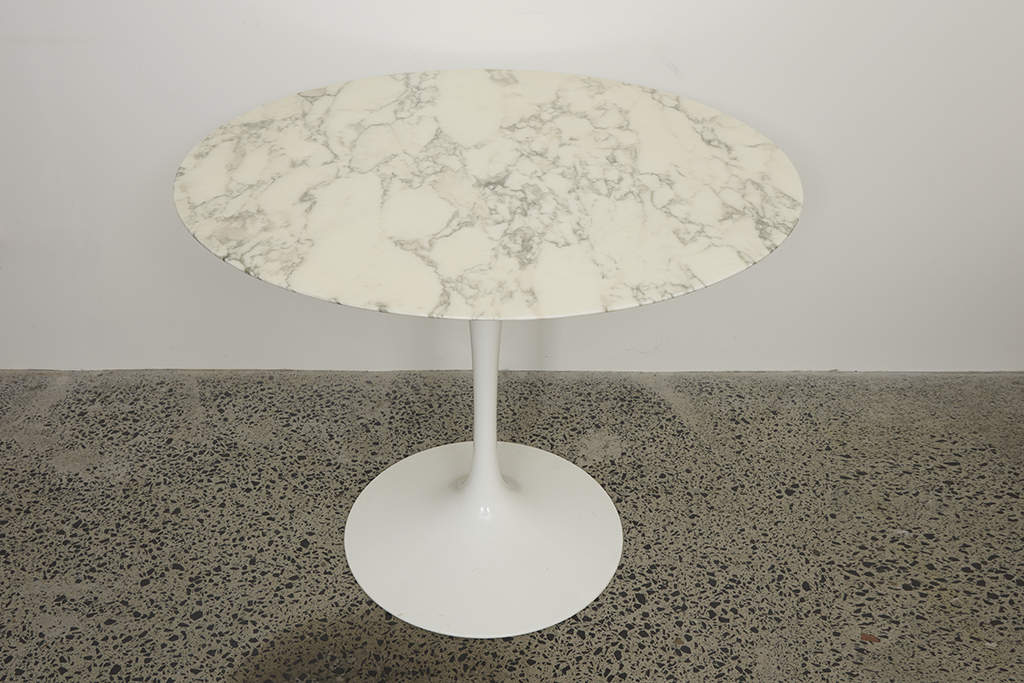

He studied at the Cranbrook Academy of Art, near Detroit his father, who designed the campus and served as director, convinced Eero that architecture should encompass a “total environment”–landscapes, buildings, furniture, and décor.

His father, Eliel Saarinen, was an architect, his mother, Louise Gesellius, a sculptor. Modernist architect and designer Eero Saarinen (1910–1961) was born in Finland, and emigrated to the U.S. A 1975 addition designed by David Kahler greatly expanded the Museum’s gallery space. The original Museum had a dramatic entryway from the central courtyard, with stairs down to three large exhibition galleries. In 1957, the War Memorial Center was dedicated “To Honor the Dead by Serving the Living.” The western face of the building features a memorial mural by Wisconsin artist Edmund Lewandowski, a mosaic of 1.4 million pieces of marble and glass. The third part is the superstructure, cantilevered outward thirty feet in three directions, which contains the meeting halls and offices of the veterans’ organizations.” The court is surrounded by the polyhedron-shaped piers, which support the building and also make frames for the breathtaking views of the lake and sky. “One is the base, which builds the mass up to the city level and contains an art museum the second, on the city level, is the memorial court with a pool. The building, a concrete, steel, and glass cruciform floating on a pedestal, included three major components, as Saarinen described: Saarinen incorporated many of Le Corbusier’s ideas: lifting the bulk of a building off the ground on reinforced columns eliminating load-bearing walls to allow a freeform façade and open floor plan and using plazas, courtyards, and rooftop terraces to allow an interaction between internal and external spaces. Meyer & Associates.Įero Saarinen’s innovative design for the War Memorial Center was influenced by the abstract geometry of modern French architect Le Corbusier. Construction began in 1955, supervised by Milwaukee architects Maynard W. When fundraising proved insufficient, Saarinen reconfigured the plan without the performance space. After the architect died in 1950, his son Eero Saarinen took over the project. Despite his astonishing success during a short career, Saarinen's influence was perhaps not fully recognized until recently, as the donation of Roche and Dinkeloo's Saarinen archives to Yale in 2005 helped lead to a surge of interest in his designs in the past decade.After World War II, Finnish architect Eliel Saarinen was commissioned to create an arts complex on the Lake Michigan shore, with a museum, performing arts center, and veterans’ memorial. Saarinen died in 1961, aged just 51, during an operation to remove a brain tumor, leaving his then-partners Kevin Roche and John Dinkeloo to complete many of his important works (including the St Louis Arch), and to go on to have very successful careers of their own. Image © Flickr user janela_da_alma licensed under CC BY 2.0 Architecturally, however, Saarinen had been quietly building up a name for himself while working with his father's company, attracting international praise for Crow Island School (1940). Eero first attracted attention while working with his father, particularly for his furniture design with Charles Eames, and he continued to produce influential furniture designs throughout his career the Tulip Chair which he designed for Knoll, for example, has become known as a classic piece of design, as have many other of his pieces in the late 1940s and early 50s. Eero followed in the family tradition, studying design under his father at Cranbrook Academy of Art before moving to study in Paris at the end of the 1920s and then the Yale School of Architecture, from which he graduated in 1934. Saarinen was born in Finland and spent his childhood there before his father Eliel's architecture work took the family to the United States. Image by Balthazar Korab in public domain


 0 kommentar(er)
0 kommentar(er)
